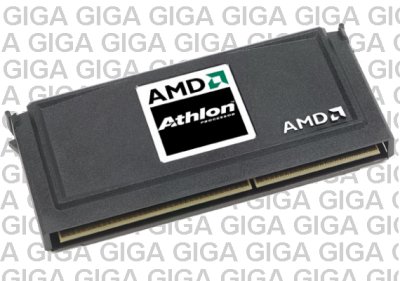The Giga Battle
Introduction
Last week something historical was supposed to happen. For the first time a microprocessor maker launched a processor that runs at 1000 MHz or 1 GHz. Two days later the competitor of this CPU maker and its sworn archenemy did the same with its own CPU, so that last week two Giga Hertz processors were born. Looking at these two happenings a bit closer however, makes this great historical moment more appear like a fancy comedy or soap opera rather than a technological or professional business event.
Winning The Giga Race
No, I don't want to go on about the fact that only very few people actually need a 'giga-CPU' right now, also not about religious issues like "my favorite CPU-maker was faster ". I will not quite yet comment on the fact that some Giga-processors are only available in homeopathic quantities or the 'great things' a Giga-processor is able to do for us, I mean meaningful stuff like e.g. running Quake at 14,568,394 fps. What I'd like to say is that the behavior of AMD as well as Intel last week looks as if my good ol' buddy Kyle, the 'hardest' man alive with the largest inferiority complex in the universe, had ran away from his shrink and become CEO of both AMD and Intel for a day.
Isn't it hard to believe that multi billion Dollar companies such as AMD and Intel are behaving like some little boys, showing off who's got the biggest and longest, racing the Giga Race? We want to be honest; there was no urgent need for a giga-whopper. It's only a few months ago when both companies had released their processors at 800 MHz and with either of the two your software was flying already. The logical consequence would have been some kind of orderly release of 850/866 MHz, then 900/933/950 parts and finally we would have been blessed with the big 'G'. Ok, I admit that AMD is looking a lot better here. The Athlon 850 came out last month and on Monday, March 6, 2000 AMD launched Athlon 900, 950 as well as the Giga-Athlon. Intel stepped from the Pentium III 800, released late December 1999 right to the Giga-Pentium III on March 8, 2000 and completely 'forgot' that there should be some actual speeds available in between, like 850, 866, 900, 933 and 950 MHz. It doesn't really matter, whichever way you look at it; you rather want to smile about the comedian touch than stand in awe for such great achievement. Still there was something really positive and useful in for all of us too. Both CPU-makers dropped their prices significantly and from this point of view we can only hope that there will be '2 Giga Hertz Day' soon as well, making processors even cheaper.
The Giga Specs
I don't want to bore you with the actual specs of both Giganauts for another time, but a few things need to be mentioned.
Giga Blaster No.1 is AMD's Giga-Athlon . This processor is based on the Athlon core from last August, but this time it's produced in 0.18 micron aluminum technology. Still Giga-Athlon requires external second level cache, which is also found inside the 'SlotA'-cartridge. Athlon's biggest problem is exactly this external L2-cache, because it only runs at a third of the processor's internal clock frequency and it's connected to the core with a 64-bit wide data path. Athlon 800 is running its L2-cache at 0.4 times the core clock, but AMD was seemingly unable to find L2-cache modules that would do the required 400 MHz for Giga-Athlon. Thus the Athlon at 1 GHz does not scale up against its brother with 800 MHz as the core clock would make it appear. This problem won't be solved until AMD will release its 'Thunderbird'-core (0.18 micron copper tech), which will have the 2nd level cache on-die, running at core clock frequency and connected to the core with a 256-bit wide data path. Giga-Athlon's core voltage was upped to 1.8 V and it requires a Giga-heatsink and Giga-power supply. Still my sample ran Giga-stable in any of my Giga-platforms.
Get Tom's Hardware's best news and in-depth reviews, straight to your inbox.
